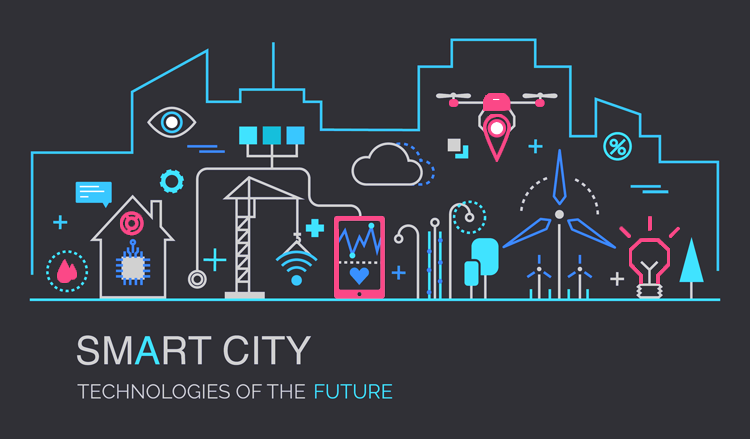What is the role of geospatial technologies in building smarter cities?

The concept of smart cities became one of the most frequently mentioned buzzwords in the terms of building and designing sustainable urban environments in the 21st century. But, this does not necessarily mean that we all understand what exactly a smart city is, and more importantly – how to build one?
For this purpose, we have chosen one of the many definitions of a smart city, that captures this conditional uncertainty:
The concept is not static, there is no absolute definition of a smart city, no end point, but rather a process, or series of steps, by which cities become more ‘livable’ and resilient and, hence, able to respond quicker to new challenges.
Department for Business, Innovation and Skills, UK 2013
Although there is no absolute definition of a smart city, we can easily pinpoint the key areas crucial for building more sustainable, resilient and responsive cities – those are smart transportation, public administration, governance and public services including utilities as well as the health system and education.
In almost all of these areas, a geospatial component together with new technologies has an important role. Relevant data about traffic (roadworks, traffic jams, optimal routes…), road infrastructure (signs, potholes, road damages), public health (hospital infrastructure, spreading of the diseases) or important community practices (citizen initiatives, projects and cultural heritage) can be easily visualized, organized and interpreted using interactive web maps.
The best way to interpret and understand data is through the means of collaboration between different city departments, field crews, citizens, and businesses – all of which becomes possible in the cloud-based mapping system. Interactive maps on different devices become a smart workboard where different stakeholders such as city officials, citizens, and local businesses discuss, interact and make decisions based on a real-time insight.
So, having in mind that building smarter cities is a process and not a point in time, using geospatial technologies is an important, if not the first, step in making use of all the ‘big data’ we already have and are receiving daily – traffic routes, disease emergencies, fire hazards, water infrastructure, tourism, telecommunications and many others.
Data is usually locked in endless spreadsheets and various documents on workstations and servers. Placing all that data on a collaborative map means that we can make informed decisions instantly, using any device and from anywhere in the world.
How can it be done?
Let’s move on to concrete and practical examples:
1. GIS Technologies can increase efficiency in public services and utilities by increasing collaboration between departments, crews, and different stakeholders
2. Public maps are a great way to inform and engage citizens, therefore improving governance and city administration
3. Geospatial component can assist emergency response and help saving lives
4. Digital maps can be a great way to bring communities together and preserve cultural heritage
5. GIS applications are an essential part in improving daily commute and city transportation systems
6. Geospatial awareness plays an important role in controlling diseases and improving public health
7. Cloud-based collaboration on a map improves communication, decision-making, and efficiency in conducting different projects such as watershed cleanup events and landfill remediation
And these are only some of the examples of utilizing mapping technologies in order to build more sustainable future and smarter cities.
Interested in GIS Solutions for Smart Cities?
Contact us at: smartcities@giscloud.com






